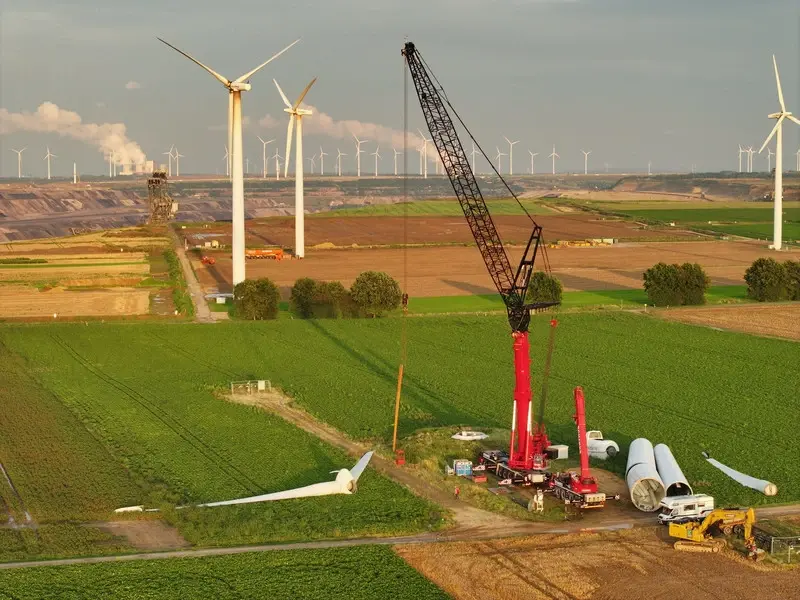

I’ve read that long COVID is mostly neurological


I’ve read that long COVID is mostly neurological


It’s artificially limited, but I don’t think the number of housing units is necessarily how the limitation is imposed. You see, landlords aren’t actually interested in tenants, they’re interested in property values going up. Why? Because land and housing are legally considered capital, the value of which they can leverage for loans. That results in what we see happening in NYC and many other places, where apartments and retail spaces can lie vacant for years because the rent demanded by the owner is absurd, but to ask for less rent would lower the building’s valuation. It’s also why we have far more empty housing units than homeless people in this country, about 27 empty units for each homeless person. If these landlords were honestly participating in the market, or if housing wasn’t considered capital, housing prices never would have gotten this high - and I suspect the same is true of the number of homeless.
The hyper-wealthy basically gave themselves a cheat code decades ago and have been abusing it to the detriment of markets and regular people ever since. We have a government body, the FTC, that’s supposed to put a stop to this kind of market abuse, but the last time it really did its job at all was when it broke up Ma Bell forty years ago. For far too long it’s been content to let corporations that are already far too big and have far too much influence over the market continue buying up their competitors or colluding to inflate bubbles.


I don’t think any of what you’ve said there is true? By my estimation, and based on numbers from USGS.gov, given the average household energy use of 893 kWh per month, and the Keyenberg-Holzweiler wind farm’s total capacity of 10 MW (each turbine was only 1.3 MW) which translates to 3 GWh per month, the entire wind farm powered less than 3400 homes. To say that each turbine powered 16,000 households (and thus the entire farm powers 128,000) is off by nearly two orders of magnitude.
Furthermore, RWE says they have 7.2 GW of wind turbines under construction, which if true you’ll note is hundreds of times more power generation than the wind farm they’re tearing down, and definitely not a sign of a company that’s trying to get more fossil fuels. This coal mine they’re expanding is apparently the last bit of coal they’ll be allowed to dig up, and their ability to do so upon decommissioning of the wind farm was negotiated 20 years ago. This is not a recent decision, nor is it a reversal of the general trend to build up wind power and cycle down coal.


The linked article is two sentences long and offers no context or understanding of the situation. It might as well be a headline. The only useful part of it is the photo of the wind farm being dismantled, which also shows a completely different wind farm in the background, on the other side of the expanding mine, that is not being dismantled:

But you wouldn’t realize that just from reading the article.
My understanding based on this much better article from Recharge News is that the following information is critical to understanding this decision:
First, the wind farm being dismantled is the Keyenberg-Holzweiler wind farm, which consists of 8 turbines built over 20 years ago in 2001, totaling just over 10 MW of capacity (1.3 MW each). Recently constructed wind turbine power outputs are estimated at a 42% capacity factor, which is to say they generate about 42% of the peak power they’re rated for because wind isn’t always blowing; this would likely be lower for the older wind farm, but we’ll use the current amount. The 10 MW wind farm would have made 3 GWh per month, which based on an average of 893 kWh per month per household is enough to power… 3386 homes [edit: corrected my horrible math]. Not nothing, but not a lot by modern standards considering the Chinese just built a single wind turbine that outdoes the entire Keyenberg-Holzweiler wind farm by half and then some.
Furthermore, as the turbines were built 20 years ago, they were always going to be decommissioned around this time, and that’s documented in the agreements back then under which the turbines were built. RWE continues to construct many turbines elsewhere, claiming 7.2 GW of turbines are currently under construction, 720 times the rated output of the Keyenberg-Holzweiler wind farm. They’ve also built 200 MW of wind capacity in that locality, likely what we see in the background of that image.
If RWE were to replace the turbines that are being decommissioned, the coal underneath them will be worthless by the time the new turbines are decommissioned, and it’s supposedly the last of the coal they will be allowed to dig up. They’ve clearly made huge investments in building out wind power, so this represents the last vestiges of cleaning up their act.
I could not advocate more strongly that coal should be left in the ground, but this all comes down to corporate investors who care more about money than the environment, and agreements made 20 years ago, as well as the fact Germany and much of the EU is still desperate for any source of energy to maintain their current level of industry right now while they’re still building out carbon-free generation to fully replace coal/oil/gas. Reality is complex, and to me this isn’t as big of an insult to clean energy advocacy as the microscopic EUObserver “article” could lead one to think it is.
Coal is still dying in the West, so let’s not go thinking this one last gasp means that trend has changed. If we’re lucky, and demand for coal falls quickly enough, they might even scrap this mine before they’ve gotten everything out of it. Keep pushing!


Friendly reminder to everyone that mobile Firefox is perfectly compatible with uBlock Origin. To not block ads on the modern web is a security risk.


It’s almost silly to look into bird deaths and realize just how low wind power is on the list, even with its rapid growth in recent years. It was recently estimated that with the expected growth of wind power, it will be killing about 2.2 million birds a year in the US… in 2050. Meanwhile, power lines kill anywhere from 12 to 48 million a year right now, fossil-fueled power plants kill as many as 14 million a year right now, communication towers kill over 5 million, cars 60-80 million, pesticides as much as 90 million, and cats well over a billion. Every year. The numbers aren’t that hard to find. Replacing all fossil-fueled power plants with wind turbines would be a net positive for bird populations, and the facts make that very clear.
https://www.usnews.com/news/blogs/data-mine/2014/08/22/pecking-order-energys-toll-on-birds
https://www.energymonitor.ai/tech/renewables/weekly-data-how-many-birds-are-really-killed-by-wind-turbines/


You can still do that by adopting kids someone else made. No sense adding to the population when some kids already don’t have parents.


Ambri’s been building towards this for a while, so there’s a lot of material elsewhere on how the contents stay warm - put simply, it’s well-insulated, and as the battery gets bigger, the square-cube law makes it more and more efficient in that regard as the volume of heat stored increases much faster than the surface area the heat can escape through. A cold start would be expensive in terms of energy, but Ambri’s website states that a daily charge-discharge cycle provides enough waste heat to keep the critical components molten.
Just Have A Think did a piece on these batteries a couple of years ago, if you’re interested to learn more.
The first result on Kagi search is this list which shows the movie years in parentheses so you can easily skip through just the ones from the 1980s. The other search results are more about the gag itself - first use of it by Charlie Chaplin, etc.